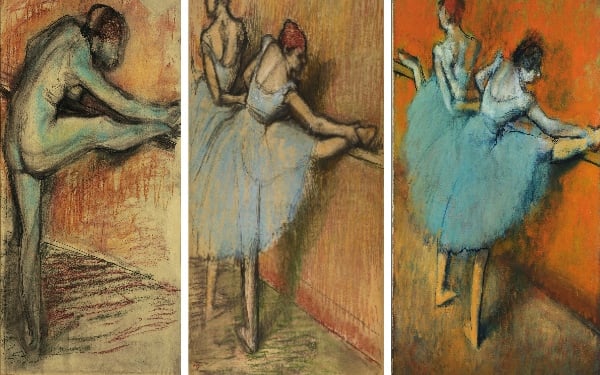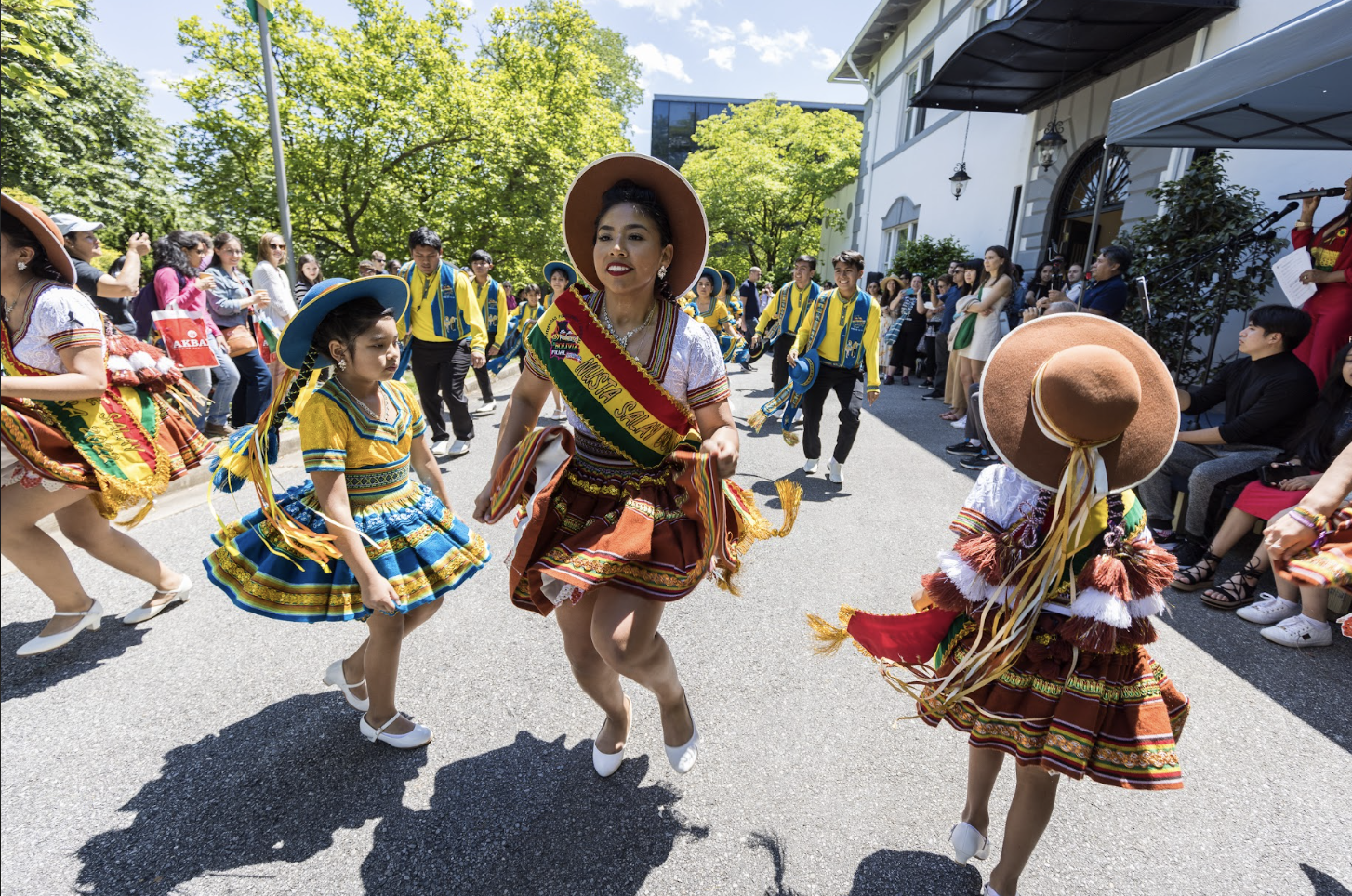The Phillips Collection’s new Degas exhibit features the artist’s Dancers at the Barre series. Photographs courtesy of The Phillips Collection
A canvas, whether sketched in charcoal, smudged in pastel, or covered in a seemingly perfected oil composition, was never finished as long as it remained in the studio of Edgar Degas.
“No art was ever less spontaneous than mine,” he once said of his work, which underwent constant evolution of technique, palette, and position—a leg stretched here instead of there, the graceful arch of a torso adjusted just so. Much like his dancers, who were usually captured in rehearsal, at the barre, or waiting off-stage, the allure of Degas is as much about his repetition and technique as it is about the grande finale.
The Phillips Collection’s orange-and-blue-hued “Dancers at the Barre” is a perfect example—recent conservation efforts reveal that Degas worked and reworked the canvas more than eight times, starting with a simple charcoal tracing in the 1880s and ending with an intensely colored and contoured oil painting at the turn of the century. The complexity lingering beneath the surface of this canvas was the inspiration behind “Degas’s Dancers at the Barre: Point and Counterpoint,” opening tomorrow at the Phillips’ Dupont Circle gallery.
Some 30 works comprise the exhibition, spanning the 40 years that Degas devoted to the study of dancers and their movement. Upon walking into the gallery, the viewer almost feels transported into Degas’s studio. Elaborately composed pieces reside next to the figure studies—charcoal sketches, linotypes, castings—that were used in their conception. Borrowing from local and international museums including the Corcoran, the Hirshhorn, the Metropolitan Museum of Art, the British Museum, and the Museum of Fine Arts in Boston, the curation begins with early drawings and oils and culminates in the vivid pastels characteristic of the artist’s late career, much like the evolution of “Dancers at the Barre.” The viewer is able to trace the paintings back to their more fundamental components—the meticulous researches and experiments that were for Degas his combinations and choreography.
“Degas’s Dancers at the Barre: Point and Counterpoint” is on view at the Phillips Collection until January 8. Tickets are $12 for adults, $10 for students. Visit the Web site for information on special events associated with the exhibition.


















